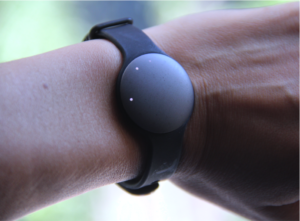
Alongside the rapidly growing consumer market for wearable sensors is an expanding research trend of combining EMA / Experience Sampling with passive data collection from wearables. Over the last few years we have supported numerous projects using third party sensors alongside our mEMA apps. The project closest to our hearts is one supporting children and adolescents with severe autism.
The mEMA apps are being used in classrooms and treatment centers across the northeast so staff and parents can keep daily logs of each student’s behavior, mood and ability to participate in daily activities. Simultaneously, wearable sensors are tracking physiological data including heart rate, electrodermal activity (EDA), body temperature and motion while microphones and videos in the classroom record the events. The wearable sensors sample at 32 Hz and the staff record observations about once an hour so we end up collecting a lot of data!
We’ve configured the ilumivu system to read the sensor data and display it along side the observational data coming from the mEMA apps we can all start to make sense of how physiology and behavior are linked in this very complex population. Collecting data at this intensity requires that everyone – students, teachers, parents – are fully engaged with the system. One of the best ways we have found to keep people engaged is to make data collection immediately beneficial to each of them.
The ilumivu system allows us to assign a user level to each user so when a parent logs in she sees the data displayed in a way that allows her to see what is more important to her. Similarly, the staff see data from all the children in their class in a way designed specifically for her and authorized researchers can log into the database and access the full data set whenever they need to.
As we learn more about the relationship of heart rate and EDA to key behaviors in autism we are working towards more direct communication between wearable sensors and the apps so that physiological events (which are often unseen by even trained observers) trigger EMA surveys so we can deepen our understanding more. To receive new editions of the Researcher’s Guide to Wearables and other product news, please sign up for our Newsletter.
